

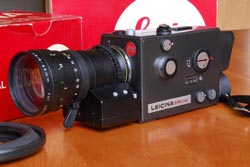
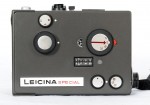
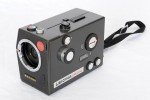
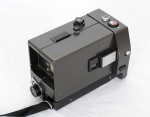
It wasn’t a brick because of it’s weight, it was a brick because it was literally shaped like a brick. The camera body was a solid rectangular block of old-skool mechanical cinematography that was all business. Controls along the left side are shutter mode (continuous, single frame, or time exposure), ASA/ISO dial, fps speed (6, 18, 25 and 54 via an high speed button on the top), viewfinder blackout, and focusing aid (ground glass, split screen or grid).
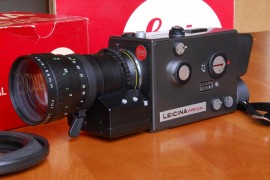
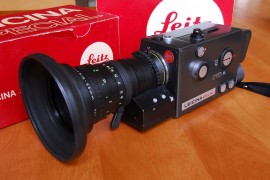
What made it such a fantastic movie camera is one of the things that makes Leica a highly desirable camera: the lens. The Optivaron 6-66mm f/1.8 zoom lens was a sharp optical masterpiece. This particular model of the Optivaron had automatic diaphragm control for auto exposure, and adjustable rate power zoom. The mechanicals for these features was enclosed in a special housing under the base of the lens. Power for the unit was drawn from the camera batteries (5 – 1.5v AA batteries) through contacts in the lens mount.
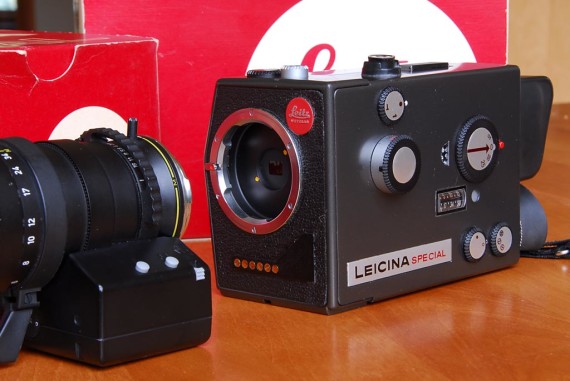
Another cool feature of the Leicina is lens interchangeability. The M-mount bayonet allowed other Leica lenses to be attached.
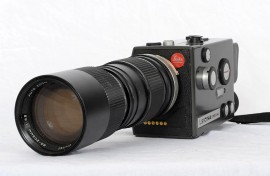

There were also many different adapters available for the Leicina to use other brands of lenses. Here an old Vivitar 85-205mm Canon FD mount lens is mounted to the Leicina using the Canon/Leica adapter.
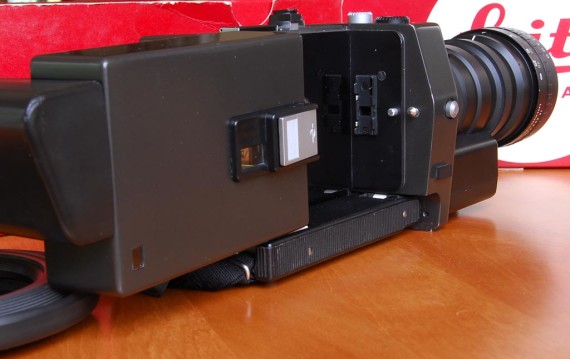 Film was inserted into the camera through a sliding door.
Film was inserted into the camera through a sliding door.
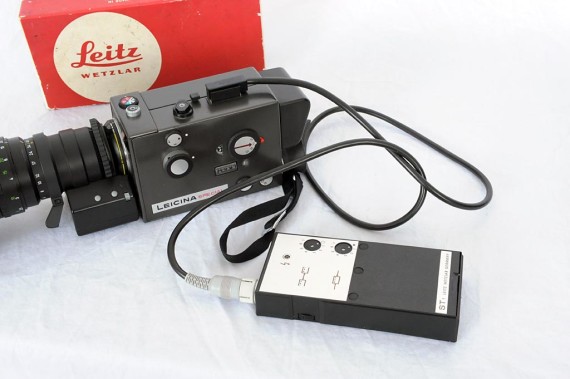
This is the optional ST-1 Electronic Controller. Plugged into a special port on the Leicina camera body, the ST-1 gave the Leicina an intervalometer, sequence timer, sound synch tone generator and remote battery pack.
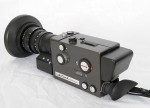
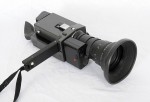

Ergonomics are where the camera’s design suffered. The viewfinder was located at the bottom of the rear of the camera, with the camera operator’s forehead resting on the battery pack just above the viewfinder. It was an odd design characteristic. The handle folds out of the bottom of the camera and is narrow and not very comfortable to hold. It feels too small for the camera. The camera was also pretty noisy when running. It is a very different camera than the likes of those that were coming out of Japan at the time, like the amazing Canon 1014 XL-S. But what the Leicina lacked in ergonomics, it made up for it in image quality. The Optivaron lens, along with several excellent prime (non-zoom) lenses made specifically for the camera, put it a level above most other cameras.
This is some test footage I shot with the Leicina. One thing I noticed right away is how crisp and sharp the images were when compared to the Canon 1014XL-S. Superior optics make the difference.
[wordbay]leicina[/wordbay]
If you would like to make a comment, please fill out the form below.
Bad Behavior has blocked 430 access attempts in the last 7 days.
I aquired the exact same camera from my uncles estate. It is in excellent condition, but I have no use for it. Do you know of anyone who may be interested in buying, or trading something for it?
Thanks for posting all this 🙂 I really would like one of these cameras. They still go for quite silly money though and I can’t risk over-paying for a non-functional model (There are a lot of broken cine cameras being sold these days as ‘untested’ : ( ). I still shoot super 8 film sometimes and have been using Nizo cameras the last few years. I’d really like to experience the reputed stability and sharpness of this Special camera and the changeable lenses could be really interesting.
Hello!
Thanks for a nice introduction. What adapter did You use between the Canon lens and the Leicina? Brand, number etc?
Kind regards, GAbriel
I’m not sure who makes the adapter. It has no manufacturer markings of any kind on it. It only has a sticker that reads ‘Canon – Leicina’.